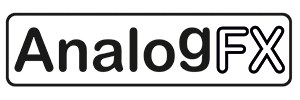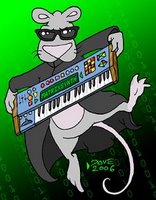Showing posts sorted by relevance for query Why Drums. Sort by date Show all posts
Showing posts sorted by relevance for query Why Drums. Sort by date Show all posts
Monday, July 25, 2022
Why you hate modular synthesizers
video uploads by Why You Hate Modular Synths
Playlist:
Why you hate modular synthesizers - hi-hats
Why you hate modular synthesizers - cat hair
Why you hate modular synthesizers - Kick Drums
Why You Hate Modular Synthesizers - Synthesizers
Why You Hate Modular Synthesizers - Cables
Why you hate modular synthesizers - in the... on the... at the...
Sunday, November 21, 2010
Carbon111 - Stealing The Sun
A new release by Carbon111 (click for more info on the release). Note this also went up on MATRIXSYNTH-C. Posting here for the synths. See this post for what goes up where and why.
Update: Worth noting is Steve Turnidge of SYNTHWERKS mastered the release.
"Silver Thread - Ensoniq Fizmo and Waldorf Q provide backing pads, Korg Oasys is bass and string sounds while Digidesign's Boom provides percussion.
Breathing Machinery - Korg Oasys does Piano and Wave Sequencing, Weird Pads are NI's Absynth and, except for some clickety bits from Digidesign's "Boom", all the Drum Sounds and Rhythm Beds were done in NI's Absynth as well.
Subterranean Bathers - Ensoniq VFX is the voxy pad, Korg Oasys is piano, drums and everything else.
The Initiation - Lead Drones are from the SCI Prophet 600, Piano is Nord Stage, Pads are provided by Nord Wave, and Metallic Stabs and Drums are Korg Oasys.
Luna - The Nord Stage is on "distorted lead", Nord Wave on "grungy Santur" and Oasys on drums and "ambiance".
Walden - Waldorf Microwave XT is synth lead, Nord Stage is all pianos, Absynth4 and Alchemy provide ambient beds and Korg Electribe ES-1 is drums.
Stealing The Sun - All pianos and synth sounds are Nord Stage, drums are Korg Electribe ES-1.
The Big Room - Sync lead is Nord Wave, Grungy synth organ is Nord Stage, Pads are Korg Oasys and Drums are Digidesign's Boom.
Strangeness - Drums are provided by Korg Electribe ES-1, everything else is Waldorf Q.
No Time - All sounds provided by the Korg Oasys."
LABELS/MORE:
Audio,
Clavia,
Ensoniq,
Featured,
Korg,
Native Instruments,
Sequential Circuits,
Soft Synths,
SYNTHWERKS,
Updates,
Waldorf
Saturday, March 30, 2024
LEPLOOP DRUM MACHINE IMPROV IN A HOTEL IN MUNICH
video upload by Why Drums
"A free improvisation with the LEPLOOP, recording through the OP-Z into a laptop, and using a little bit of reverb from the OP-Z. What a brilliant instrument."
https://www.leploop.org/
Update:
LEPLOOP LIVE WITH T REX REPLICATOR TAPE DELAY
video upload by Why Drums
"A live jam with the LEPLOOP and a great tape delay pedal- The T-Rex Replicator. I love the weird harmony the LEPLOOP is doing, which of course I will never be able to create ever again. OH WELL! Fun, anyway."
Monday, August 01, 2016
Gingoko Grains-With RZ-1 Drums Firmware
Published on Aug 1, 2016 Ben Francis
"Just Uploaded The RZ-1 drums-(Firmware) V2.2 PCB v2 (updated user code by JGB; input 3 is trigger input. I could not find anything online to hear it ...so here it is ."
Grains is a DIY kit from Ginko Synthese. The RZ-1 is of course the Casio RZ-1.
via Ginko Synthese:
Interesting codes to upload in your Grains:
Grains V1 PCB v1 (basic code for PCB v1)
Grains V2 PCB v2 (basic code for PCB v2)
Fresh PCB v1 (user code By Rob Bothof)
KALLE STRAM PCB v1 (user code by Kalle Govertz H. Christensen)
Patternrain V1 PCB v1 (user code by JGB; input 3 needs a clock input to work)
Patternrain V2 PCB v2 (user code by JGB; input 3 needs a clock input to work)
Grainsring V1 PCB v1 (user code by JGB; input 3 needs a clock input to work)
Grainsring V2 PCB v2 (user code by JGB; input 3 needs a clock input to work)
RZ-1 drums V1 PCB v1 (user code by JGB; input 2 is trigger input)
RZ-1 drums V2 PCB v2 (user code by JGB; input 3 is trigger input)
RZ-1 drums V2.2 PCB v2 (updated user code by JGB; input 3 is trigger input)
Wave V1 PCB v1 (user code by JGB)
Wave V2 PCB v2 (user code by JGB)
Cereals V1 PCB v1 (user code by HRTL)
Cereals V2 PCB v2 (user code by HRTL)
falafel-raps-changed-v2 PCB v2 (user code by Falafular)
Resonance-like feedback (coming soon)
Short-wave radio-like warbles and whistles (coming soon)
"The sound is a PWM output routed via an (optional) low-pass filter and a 100uF capacitor – so no external DAC is required. The low-pass filter on the PCB can be bypassed if you want. Bypassing the filter provides more clarity and a slightly louder output but more artifacts in the sound.
Not bored yet?
Here comes more information about the synthesis technique on the basic code and you will understand why I called this module “Grains”.
The “Grains” code provided on your module is based on FOF synthesis or formant synthesis. FOF synthesis is closely related to synchronous granular synthesis. It uses two simple triangle-shaped grains. The grains are separated by the same amount of time. With granular synthesis, the spacing within the grains radically change the texture that is created. The FOF grains have very little parameters: pitch and decay. In the basic “Grains” code the 2 decay values are fixed to most musical sounding and can not be altered via potentiometers. So only the pitch of the two grains can be altered via pots (or the cv inputs) and the overall grains repetition which provides the pitch of the output."
Friday, June 06, 2008
mc303 mis-use: stepsequencing software with the groovebox
YouTube via se7ense7
"I used the mc303 to step edit some drums. Nothing special or out of the ordinary. BUT I didn't use the internal sounds. All the drums you hear are samples in the Ableton Drum Rack, all the drum mutes are performed from the MC303 and no audio cable was plugged into the MC303.
Why would someone do this?
I dunno. It makes for a great looking midi-controller, and in fact it's a sequencing midi-controller. Ideal for live use.
Imagine a sequencer triggering a synthesizer (MPC triggering Virus or something), and you want to be able to change the drums while the MPC keeps sequencing the virus. But you hate the sound of the MC303. Then you just assign the midi from the MC303 to a program on the MPC with cool drums, and you switch around on the MC303...
That's gotta make sense right?"
Monday, August 22, 2022
Aha - Take On Me | Why are these drums so recognizable? | Tutorial w/ the Isla Instruments S2400
video upload by Espen Kraft
"In a recent gig I had to recreate the openings of more than 40 80s chart hits. One song was 'Take on me' by A-ha. The song starts with the only drums and it has a very recognizable drum part. As I studied the drum pattern I realized there was some genius programming at work here.
Support this channel on Patreon:
https://www.patreon.com/espenkraft
The drums used in this video are my own custom drums, not taken from the recordings. The sounds of my remake (synth sounds used) are not meant to be carbon copies of the original either, that was never the intent nor was it required by the client."
Tuesday, January 19, 2010
NOT NAMM: Image Line Drumatrix
 "The Drumatrix [now Drumaxx] percussion modelling instrument gives you total control over 10 physically modelled drums that can be routed to independent outputs for external effects processing.
"The Drumatrix [now Drumaxx] percussion modelling instrument gives you total control over 10 physically modelled drums that can be routed to independent outputs for external effects processing.Great, but why should you care when the internet is awash with fantastic sounding drum samples? In two words, expressive realism. Once a drum sound is recorded, the performance and modulation options are limited to filtering, volume or similar 1-dimensional filtering effects. When a single drum sample is triggered in a roll you get the familiar 'machine-gun' effect, it just sounds artificial. Multi-sampled, multi-layered drums can overcome this limitation but need multi-megabyte or even Gigabyte! drum libraries, and even then, you are still limited to the sounds originally recorded.
Drumatrix is not based on samples or even commonly used 'synthesis' techniques, where oscillators are mixed and the result is 'electronic'. Drumatrix is a truly 'modelled' drum, and not just a single drum, Drumatrix can model bass drums, hi-hats, snares, realistic and yes electronic sounds too. But what about the traditional 'Achilles' heel' of synthesis, cymbals? We have left the best until last, Drumatrix models cymbals & metallic 'ethnic' percussion instruments with ease.
At the core of Drumatrix is a model of the drum-head. Here the vibrating membrane is represented in a mesh of inter-connected of points, each given physical properties, mass, inertia, stiffness, damping and all that good physics stuff. For the musician, this means Drumatrix can model the drum-head with multiple parameters such as material, thickness, tension and even shape. More importantly the parameters can be modulated in real-time as a function of velocity or external controls. The drum body is also modelled, in terms of material, size, vibration damping and shape. All this gives you multi-dimensional performance possibilities, a Matrix of variables providing the almost infinite complexity & subtlety of hitting a real drum.
Key features:
10 Physically modelled drum pads.
Multi-output for individual effects processing on each pad.
Huge range of modelling possibilities covering sounds from cymbals to kettle-drums.
Velocity modulation matrix for detailed expressiveness.
Integrated Stepsequencer with trigger-key playback.
Integrated effects.
Single-pad version 'Drumpad' available for tight integration with FL Studio Stepsequencer
Thursday, May 18, 2017
Modular Patch/Performances by Mike Thomas
Published on May 14, 2017 Mike Thomas
Notes for each further below.
Playlist:
Modular Jam : Lords of the West : Rings, Elements, Clouds, Peaks
Modular Melody: Church of Meta Q - Tides (Parasite), Function, Clouds
Modular Jam: SynthTech E350/E355/E440, Mutable Instruments Elements/Clouds, Pittsburgh SV-1/KB-1
Modular Patch/Performance: Slow to Go
Modular Patch/Performance:- The Big Build
Modular Patch/Performance: Sargasso
Modular Patch/Performance: Fair Winds
Modular Patch/Performance - Over the Clouds
Modular Patch/Performance: March of the Shift Register
Modular Etude #1
Notes:
Friday, August 23, 2024
Compact jam on Circuit Tracks & MicroMonsta 2
video upload by Jay Hosking
"A live synthesizer jam performed entirely on hardware.
Sometimes it's nice to go back to the basics. The Novation Circuit was my entry point to the world of hardware in 2018, and while I've mostly moved on from the Circuit, it's so nice to go back to sometimes. Here, I'm using the Circuit Tracks—a worthy successor to the original, thanks to its additional two sequencing tracks—for two synths and drums, plus as the sequencer and mixer for the additional voices from the Audiothingies MicroMonsta 2.
The MicroMonsta 2 is one of those handy devices that does exactly what you need when you need it. It's super small and fits in any table setup, is bitimbral, has effects, and most importantly, sounds pretty good. Here, I stumbled into a sort of arp/pad crossover thing (thought I was recording a mono line, and accidentally recorded some pleasing polyphony) and, thanks to the hands-on filter control and its reverb, got me a lot of movement. For the second voice, I thought I'd demonstrate the less polite side of the MM2, and I love how huge the bass sound is. I only wish the MM2 were more readily available for those who want it!
Together, this little setup gives me four voices of synths, drums, effects, sidechaining to the kick, and some performance options. It was a great reminder of why I fell in love with grooveboxes, and why I love hardware in general.
Thanks for listening.
Novation Circuit Tracks - two synths, four drums, effects, mixing
Audiothingies MicroMonsta 2 - two synths with effects, routed into the Circuit Tracks
Performed and recorded live to a stereo output, with EQ, compression, and limiting on the master.
https://jayhosking.bandcamp.com"
Monday, May 17, 2021
Why is the Roland JUNO-106 still so popular?
video by synthlegends
"In this video you listen only to Roland JUNO-106 sounds (Multitrackdemo also including drums). I used to own a JUNO-106 several years ago, then sold it, because I also have a JUNO-60. After some time I missed it and decided to buy another JUNO-106. The Reasons are:
1. it sounds different from the JUNO-60 (there is another filter)
2. it has great MIDI functions to implement it in a modern setup
3. it has portamento
4. the self resonance is really outstanding for technoid sounds
5. three Key Modes, including unison mode, which is easer to access but it sounds only useful for drums ans industrial bases
6. it's perfect sounding in a mix and a great production tool
7. it has a broad sound palette and is useful for modern styles
8. it's great for drums and bass
The JUNO-60 has got an arpeggiator, the 106 not. So what, in a recording session I use it from my DAW or an external one. For Jamming with a drummashine without computer, the JUNO-60 makes more fun.
So I decided that the JUNO-60 is great sounding, but not a substitute for a JUNO-106.
The reasons, why it is still so popular are:
1. It always sounds great and it has a wide sweet spot
2. It is simple to program
3. It covers a range of 80 to 90 % of all bread and butter sounds you really need
4. It is capable of a lot of genres, italo disco, 80-ies pop, electro, techno, house and much more"
You can find one for sale here
Saturday, February 11, 2017
Yamaha CS-60: "Around and Back" by Raymond Castile
Published on Feb 11, 2017 raycastile
"This piece has six parts. If you don't like what you're hearing at any given time, wait a minute, because something different is coming around the corner.
Lots of CS-60 on this track. Most of the effects sounds, the brass sounds, bass, "guitar" sounds, flute sounds, and more. The arpeggios are the Roland D-50 and Ensoniq ESQ1. Novation MoroderNova is playing some 303-ish filter sweeping arpeggios. String pads are the Korg M1 and XILS V+. The ESQ1 also does the repeating string stabs toward the end. Drums are a combination of the Roland XP-30 and Emu Proteus I.
This is the first time in years I have incorporated a drum track. I'm not big on drums. But this piece started as an attempt to do an Italian disco-style track, then evolved into something very different. The drums are a vestige of the original idea.
This is also one of the few times I've used a compressor. I usually prefer a looser, more organic sound. But because of the dance-like quality of the second half, I thought it needed the compressed sound associated with dance music. I'm not experienced with compressors, so it's probably not the most elegant example of audio compression you've ever heard. I might upload an uncompressed version in the future.
The video splices together many takes. During the outro, when you hear the brass sound, you are not seeing the same take you are hearing. The video of that take got deleted, or was never shot. So I had to use video of a different take and dissolve out of it before it became obvious. That is why that shot seems to end prematurely.
During the intro and outro, when it seems like I am staring into space, not playing anything, it is not because I'm drunk, stoned or insane. I am performing the rising and falling glissando effects. See my fingers at both ends of the keyboard? I'm actually playing something, honest."
Tuesday, August 16, 2016
One of a Kind Prototype Green Moog Little Phatty Stage II SN 9931
Note: links to listings are affiliate links for which the site may be compensated.
via this auction
This is the Green Little Phatty in the video below. More pics follow after the video.
"Moog Little Phatty Stage II Plus Green. This is a one of a kind prototype. The only one out there with the white Moog logo instead of the black (they called those Toxic Phatty's and they were a limited run.) Not modded or customized, this is from the factory. This seems to be the 'test' model to see which color worked best for that limited run of Toxic Phattys. Has all the stage two options, CV in and out, plus the lighted mod wheel with LFO rate flashing. Gorgeous green lights on the front and that sweet green with white logo back plate. Comes with original box, original manual and power cord. Hate to sell, but I can't keep them all. Needs a good caring home that loves this green goddess."
MoogFest (Why are we not playing at?) by Synthetic Things
Published on Apr 20, 2014 SyntheticThings
"All in good fun and love for Moog we've put together this Synthetic Things music video for the new song called "MoogFest (Why are we not playing at?)". It's a tribute, and a plea for next year, not a slam or accusation of Moog, or MoogFest. To be honest, we're so excited that Moog has taken this event back under their control. It's an amazing festival of synth nerd mega geek out awesomeness. That's why we want to play even more than before.
Check out more music at http://syntheticthings.com
We actually started this band almost exclusively to play at MoogFest because we are such synth geeks, and it would mean a lot to us. This is a tribute as much as a plea.
Gear used:
Moog Voyager running through Mooger Foogers: MF-103 Phaser, MF-104m Delay, MF-107 FeqBox, CP-251, VX-351 - For glide riffs.
Moog Little Phatty, Green w/ white logo (one of a kind). - Intro FX, Happy Synth, pad line, and bass extras.
DSI Tempest - All drums.
Elektron Analog FOUR - Bass riff & Synth hit pattern.
Moog MiniTaur - Big modulated bottom.
AniMoog - Pad line double.
Alesis Andromeda: Big Wet Arp FX
Boss SE-70 controlled by a Moog SubPhatty - Vocoder.
Special Thanks to Pete Carty, Chris Martin, Trey Counce, and Jim Rogers."
via this auction
This is the Green Little Phatty in the video below. More pics follow after the video.
"Moog Little Phatty Stage II Plus Green. This is a one of a kind prototype. The only one out there with the white Moog logo instead of the black (they called those Toxic Phatty's and they were a limited run.) Not modded or customized, this is from the factory. This seems to be the 'test' model to see which color worked best for that limited run of Toxic Phattys. Has all the stage two options, CV in and out, plus the lighted mod wheel with LFO rate flashing. Gorgeous green lights on the front and that sweet green with white logo back plate. Comes with original box, original manual and power cord. Hate to sell, but I can't keep them all. Needs a good caring home that loves this green goddess."
MoogFest (Why are we not playing at?) by Synthetic Things
Published on Apr 20, 2014 SyntheticThings
"All in good fun and love for Moog we've put together this Synthetic Things music video for the new song called "MoogFest (Why are we not playing at?)". It's a tribute, and a plea for next year, not a slam or accusation of Moog, or MoogFest. To be honest, we're so excited that Moog has taken this event back under their control. It's an amazing festival of synth nerd mega geek out awesomeness. That's why we want to play even more than before.
Check out more music at http://syntheticthings.com
We actually started this band almost exclusively to play at MoogFest because we are such synth geeks, and it would mean a lot to us. This is a tribute as much as a plea.
Gear used:
Moog Voyager running through Mooger Foogers: MF-103 Phaser, MF-104m Delay, MF-107 FeqBox, CP-251, VX-351 - For glide riffs.
Moog Little Phatty, Green w/ white logo (one of a kind). - Intro FX, Happy Synth, pad line, and bass extras.
DSI Tempest - All drums.
Elektron Analog FOUR - Bass riff & Synth hit pattern.
Moog MiniTaur - Big modulated bottom.
AniMoog - Pad line double.
Alesis Andromeda: Big Wet Arp FX
Boss SE-70 controlled by a Moog SubPhatty - Vocoder.
Special Thanks to Pete Carty, Chris Martin, Trey Counce, and Jim Rogers."
Tuesday, April 02, 2024
MFB TANZBAR 2 JAM WITH THE LEPLOOP
video upload by Why Drums
"The LEPLOOP does the kick and white noise snare, and a tiny bit of synth. The MFB Tanzbar 2 does everything else. The Tanzbar 2 is a bit of pain in the arse to use but it sounds great- it's fun to try and make it do what you want.
The filters on it are really rough, which works great on clap and perc sounds. The bass synth is out of tune, and the bass sequencer is a nightmare, but then of course you get some unexpected results.
I love the LEPLOOP kick, it works so well as a foundation. Very fun to try and make these two idiosyncratic machines work together is a rubbery way."
Wednesday, April 03, 2024
MFB TANZBAR 2 WITH VERMONA RETROVERB AND LEPLOOP LIVE JAM
video upload by Why Drums
"Almost all of this is from the Tanzbar 2. The Vermona does not actually create as much of the drive/distortion as you might think, as the Tanzbar 2 has a secret weapon in the onboard (but almost hidden) bit crusher, plus the very dirty filters that very quickly sound crunchy when you trigger what should be melodic samples through them. The LEPLOOP just adds a small amount of synth stuff at the end. I enjoyed this one a lot hence all the camera nonsense."
Saturday, December 31, 2022
Synth jam with Arturia MiniFreak, Dreadbox Erebus, eurorack drums, and Reason 12 synths
video upload by Jay Hosking
"An impromptu song that started on hardware synths and eurorack, and was finished by adding some extra sounds in the box.
This is a great example of why I love both hardware (it's inspiring!) and software (it has incredible power and can get the job finished!). Here, I was just trying out a new eurorack drum sequencer, decided to send the kick trig to the Erebus, and then began noodling on top with the MiniFreak. I wrote the song before I even knew I was writing a song. And while it was super inspiring, I could tell that I'd need a bunch more instruments to make the song feel finished. Rather than expanding the table and slowing down the creative process, I captured the inspiration already there and finished off the job in Reason afterward. It was definitely the right approach.
Dreadbox Erebus through Source Audio Ventris - bass synth locked to kick
Arturia MiniFreak - melody and pads
Eurorack drums:
- Intellijel Steppy - sequencer
- Mystic Circuits IDUM - extra glitch sequencing
- ALM Busy Circuits Pamela's New Workout - clock and LFOs
- Prok drums - kick, snare, hats
- WMD Fracture - glass-breaking claps
- Intellijel Mixup - mixing
- Noise Engineering Desmodus Versio - ducked reverb
- Intellijel FSR 1U - performance of glass breaking and reverb room size
- Endorphin.es Golden Master 1U - multi-band compression and EQ
- Intellijel Mixer 1U - output mixer
Reason 12 instruments:
- Monotone - extra bass stabs in bridges and choruses 2 and 3
- Complex-1 - arp thing, and drone/brass/pad thing
- Audio editing/pitch adjustment of the Erebus notes in the chorus (didn't have enough hands during the jam)
Hardware synths recorded together live, with a few extra tracks in the box afterward. EQ'd, compressed, limited, etc. during the final mix/master.
Thanks for listening.
https://jayhosking.bandcamp.com"
Thursday, June 09, 2022
Pico modules Erica Synths in action
video upload by Dziam Bass
"That's why I still like Pico modules from Erica Synths .
I have drums and a nice synth sound with VCO2 and I added Pico Voice- wavetable module.
I connected waves from VCO and Voice to Pico A Logic - these are different sums of SUM / DIFF / MAX and MIN and gives different exponential
Playing with VCF 3 and adding Voice wavetable on different prests produces different effects .for me very cool 😉
I have given all to Fusion mixer for adding Tube sounds.
That sounds good to me and of course fun ...!!!
Drums from Pico Drums are also a kick in the ass.
Thanks for watching and have a nice day.
Cheers"
Monday, April 16, 2018
Boss DR-202 "Simmons" Toms in Synthwave
Published on Apr 16, 2018 tiergrinder
"Here is a small quick demo that I made using a DR-202 for the electronic tom sounds for a synthwave track.
This is a response to a question that I got on my Enter The Fury video, where I was asked does the DR-202 really do the toms?
On that track the 202 does the sequencing for the intro synth line, but I replied that DR-202 is capable for nice "Simmons" tom sounds too and promised to make a quick demo.
I programmed the same tom patterns in the DR-202's internal sequencer and tuned the preset toms to match the tuning that I have on my "go to" Simmons samples. I wanted DR-202 to do all the drums so I programmed simple kick, snare, hihat and ride patterns to drive the track. Nothing too spectacular because the toms were the main point.
I recorded DR-202 dry without any external FX or EQ. When I recorded the drums, only instrument that was playing was the 202. I counted the bars and made the simple variations and break for the "track". Other parts were later added around this dry drum track.
For that reason the break is bit odd because I left the snare un muted and it pounds away through the break :D
That is also the reason why the drum sound volumes are bit all over the place.
Normally I would multitrack record every part on their own track, but here I just recorded all the drums from main outs as a mono mix to keep things honest, so there is no going back for level adjusting.
Sorry that I got carried away with the flanger, but you know.. It's so easy to end up over tweaking and forget what you were actually doing :D"
Wednesday, January 06, 2010
NOT NAMM: miniark.mov
YouTube via snazelle
"here is a very basic video of the 2nd snazzy fx product- the mini ark
(some of you know about last years audio ark)
(you can hear a bit of the actual dry guitar because the camera was so close to my guitar)
anyway, lots and lots of people asked me to make a box based on the audio ark. and this is what i came up with. It was originally designed for guitar, cello, and field recordings.on guitar it sounds much more like a tracking system/harmony pedal. on drums, bowed instruments, field recordings, and noise, it gets very unpredictable and you can always rely on it to create something unique. Right now this is my favorite to play with.
here is the product description
Thursday, May 05, 2011
Alesis Andromeda A6 Analog Synthesizer

via this auction
"It’s hard to adequately describe the good features of the Andro because there are so many. Off the top of my head:
Oscillator soft-sync, which I’ve only ever seen before on an SH-5, opens up new harmonic territory. Often quite random this can be inspirational.
Sub-oscillators tightly thicken up the two main osc, and it’s possible to get very rich oscillator sounds and thick detune before even using effects or the unison mode, which can be set from 2-16 voices.
Sunday, March 21, 2010
Why You Should Consider Getting a Modular
I wasn't sure when I was going to put this post up, but considering the previous post on a grunge effects module, I figure now is a better time than ever. You will see more effects based posts moving forward, but they will be focused on using them from a synth perspective. My gut tells me you will begin to see more effects based modules over time as well. Here's why, and why you really should consider getting into the modular world if you haven't already.
I'll try to keep this short: a modular doesn't have to be a full blown synth. It doesn't have to be a synth at all. It can be an extension to your existing setup; it can be a simple way to process your synths, guitar, drums, etc.
Start with an empty case that suits your needs and budget. Then buy a single module or two max. Be sure to pick the right size format to start (see this post for modular formats). Once you have a case, a modular can actually be a more affordable way to deal with GAS (Gear Acquisition Syndrome) than other gear. Modules are usually cheaper than synths. Also worth noting, is if you are into effects pedals, a modular system is much less messy and much easier to transport. In time I'm sure more effects oriented modules will be made. What's interesting to note is most modules do not have an on/off bypass switch like pedals. You'll need a bypass mixer module to work around this if this matters to you.
Note the biggest price of entry will be the case, but they can be affordable.
An example would be the following:
Monorocket Mission6 Case - $350
Tiptop Audio Happy Ending Kit - $149 (added 1/20/11)
Or if you want to go really minimal - a Doepfer beauty case for $120
Note the above are just examples and are both Euro-rack format cases.
Be sure to see the format chart for others and plan before you buy. See the shops below to research more and of course search for the other formats.
As for modules and what to start with. There are far too many to list. What you'll want to ask yourself is how do you want to use it. That will be dependent on your current setup. There are pretty much three types of modules to consider - those that process sound (filters, ring mods, effects, etc...), those that produce sound (Oscillators, noise sources, etc...), and those that control sounds (LFOs, envelopes, sequencers, etc).
Examples of how to integrate a modular with your synth:
1. If you have a Pedal input on your synth you can start with any controller module like a sequencer or LFO. I use a Tiptop Audio Z8000 sequencer for example. Plug it into the Pedal or CV in on any of your synths and let it sequence whatever you can route to. You will need something to clock the sequencer or in layman's terms, to get it going. If you have a drum machine, you might be able to use it to clock and sync the sequencer. For example on a Roland TR-909 you can use the Rimshot Out to trigger the sequencer. If you don't have something to clock it, you can get a low cost LFO module.
2. If you pick up a filter or effects module, simply run your audio through it. Pick up a second module like an LFO or sequencer to modulate the filter.
3. Add a sound source module to the mix.
The point of this is that you don't need to buy a full blown modular to get started. My experience was kind of funny. I was waiting for years to get a modular because every time I priced out a base system it was just too high. I finally picked up a Mattson Mini Modular because I wanted a Syntar but knew I couldn't afford one and by the time I did it might not be available. Once I had the MMM, I thought great, now I can get a eurorack case and buy a module here or there over time. I picked up my case and then found myself using it with my synths more than my MMM!!! It was a very duh moment. I realized I could have started a long time ago.
As for what modules to start out with, there are way too many to go into detail here, and it really is a personal thing. The best thing to do is to research and start thinking about what would make sense to you - size/format, cost, and what sort of modules would best work for you.
Shops to research modules and prices:
US:
http://bigcitymusic.com/
http://noisebug.net/
http://analoguehaven.com/
UK and Europe:
http://schneidersbuero.de/
http://postmodular.co.uk/motm
http://modularsquare.com/
BTW, I want to be super fair in this post. If I missed any shops for modular gear, let me know and I will update the post. If you prefer to remain anonymous shoot me an email. My contact info is on the bottom right of the site.
Modulars are like legos for synths - legos of the synth world.
I'll try to keep this short: a modular doesn't have to be a full blown synth. It doesn't have to be a synth at all. It can be an extension to your existing setup; it can be a simple way to process your synths, guitar, drums, etc.
Start with an empty case that suits your needs and budget. Then buy a single module or two max. Be sure to pick the right size format to start (see this post for modular formats). Once you have a case, a modular can actually be a more affordable way to deal with GAS (Gear Acquisition Syndrome) than other gear. Modules are usually cheaper than synths. Also worth noting, is if you are into effects pedals, a modular system is much less messy and much easier to transport. In time I'm sure more effects oriented modules will be made. What's interesting to note is most modules do not have an on/off bypass switch like pedals. You'll need a bypass mixer module to work around this if this matters to you.
Note the biggest price of entry will be the case, but they can be affordable.
An example would be the following:
Monorocket Mission6 Case - $350
Tiptop Audio Happy Ending Kit - $149 (added 1/20/11)
Or if you want to go really minimal - a Doepfer beauty case for $120
Note the above are just examples and are both Euro-rack format cases.
Be sure to see the format chart for others and plan before you buy. See the shops below to research more and of course search for the other formats.
As for modules and what to start with. There are far too many to list. What you'll want to ask yourself is how do you want to use it. That will be dependent on your current setup. There are pretty much three types of modules to consider - those that process sound (filters, ring mods, effects, etc...), those that produce sound (Oscillators, noise sources, etc...), and those that control sounds (LFOs, envelopes, sequencers, etc).
Examples of how to integrate a modular with your synth:
1. If you have a Pedal input on your synth you can start with any controller module like a sequencer or LFO. I use a Tiptop Audio Z8000 sequencer for example. Plug it into the Pedal or CV in on any of your synths and let it sequence whatever you can route to. You will need something to clock the sequencer or in layman's terms, to get it going. If you have a drum machine, you might be able to use it to clock and sync the sequencer. For example on a Roland TR-909 you can use the Rimshot Out to trigger the sequencer. If you don't have something to clock it, you can get a low cost LFO module.
2. If you pick up a filter or effects module, simply run your audio through it. Pick up a second module like an LFO or sequencer to modulate the filter.
3. Add a sound source module to the mix.
The point of this is that you don't need to buy a full blown modular to get started. My experience was kind of funny. I was waiting for years to get a modular because every time I priced out a base system it was just too high. I finally picked up a Mattson Mini Modular because I wanted a Syntar but knew I couldn't afford one and by the time I did it might not be available. Once I had the MMM, I thought great, now I can get a eurorack case and buy a module here or there over time. I picked up my case and then found myself using it with my synths more than my MMM!!! It was a very duh moment. I realized I could have started a long time ago.
As for what modules to start out with, there are way too many to go into detail here, and it really is a personal thing. The best thing to do is to research and start thinking about what would make sense to you - size/format, cost, and what sort of modules would best work for you.
Shops to research modules and prices:
US:
http://bigcitymusic.com/
http://noisebug.net/
http://analoguehaven.com/
UK and Europe:
http://schneidersbuero.de/
http://postmodular.co.uk/motm
http://modularsquare.com/
BTW, I want to be super fair in this post. If I missed any shops for modular gear, let me know and I will update the post. If you prefer to remain anonymous shoot me an email. My contact info is on the bottom right of the site.
Modulars are like legos for synths - legos of the synth world.
NEXT PAGE
HOME
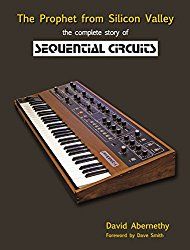
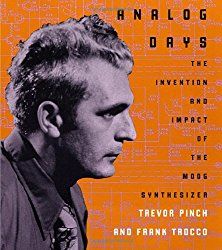
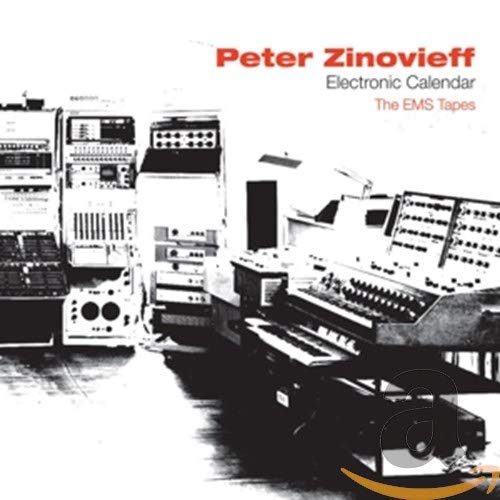
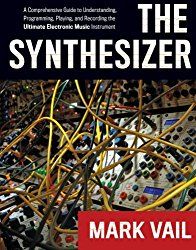
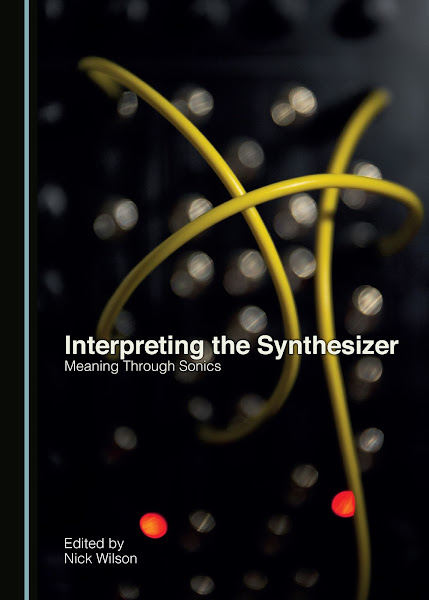
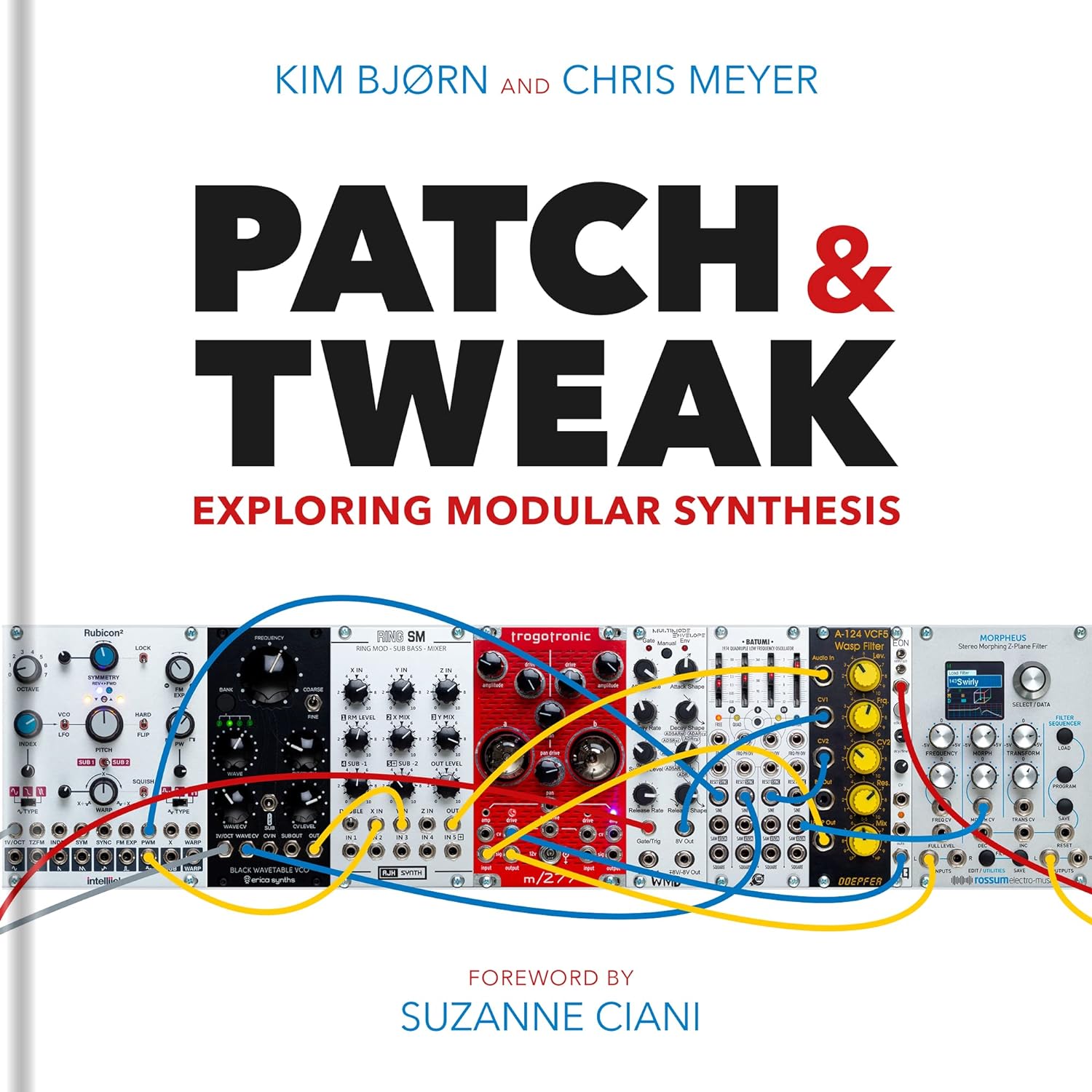

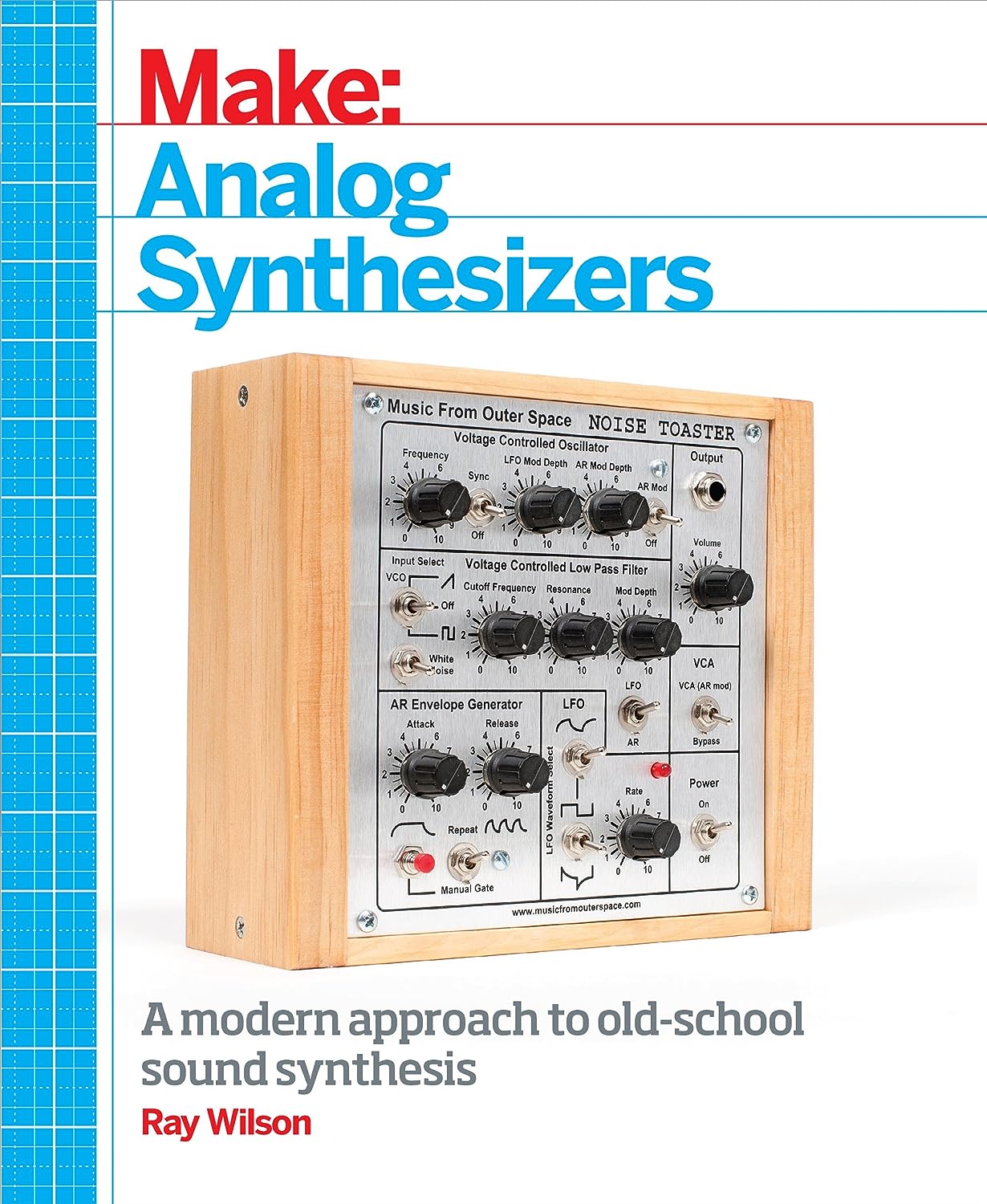
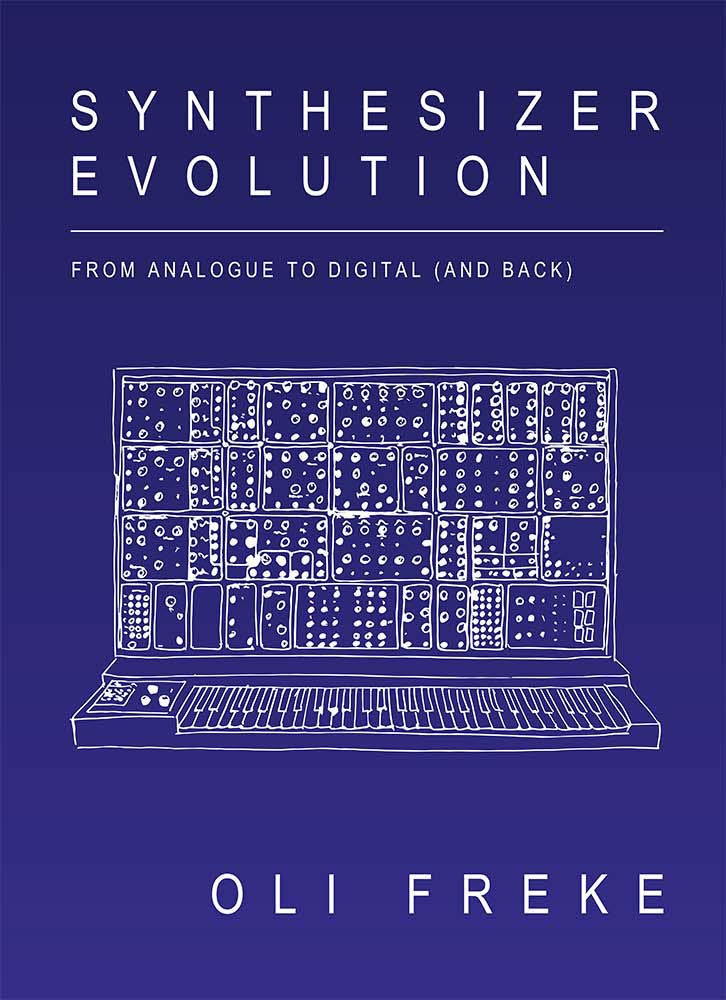
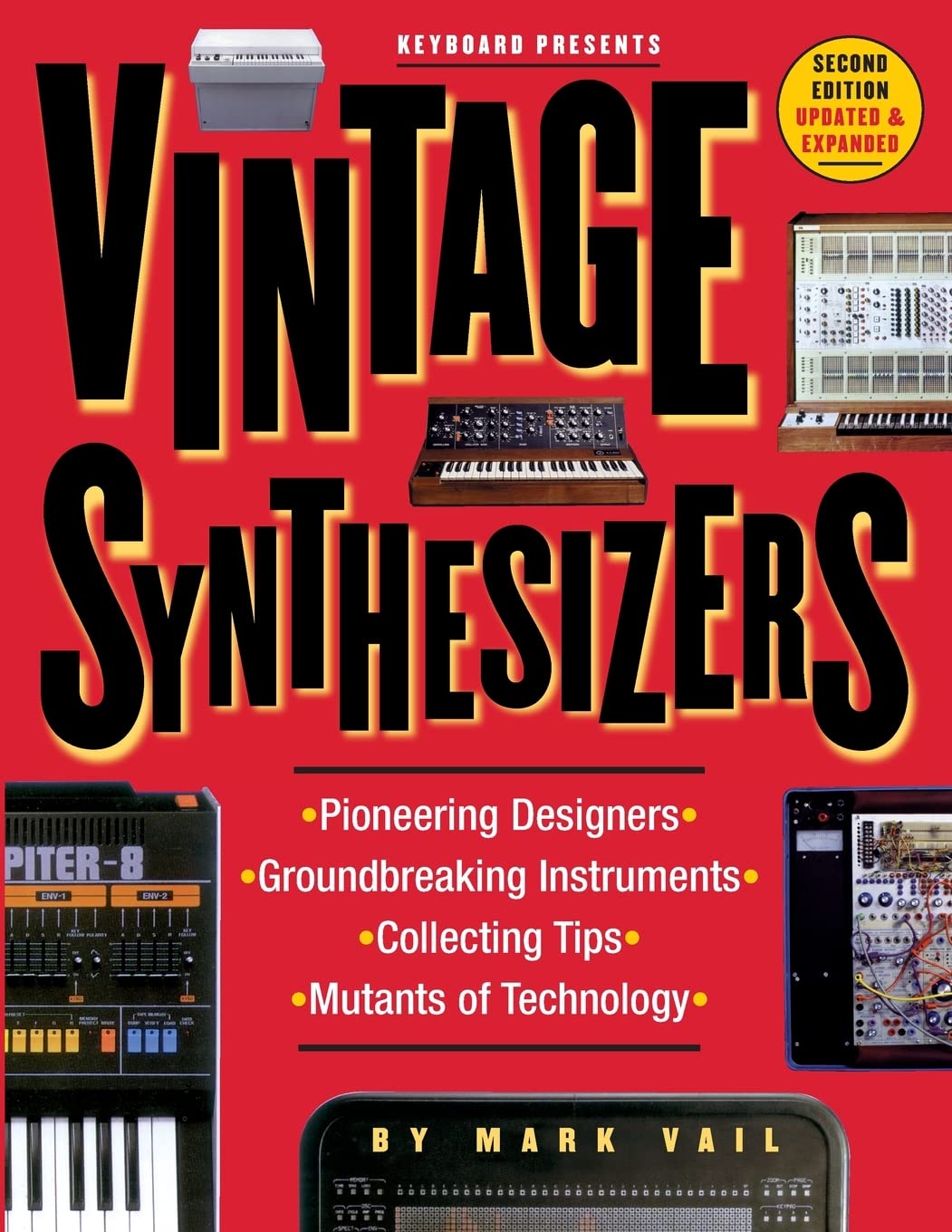
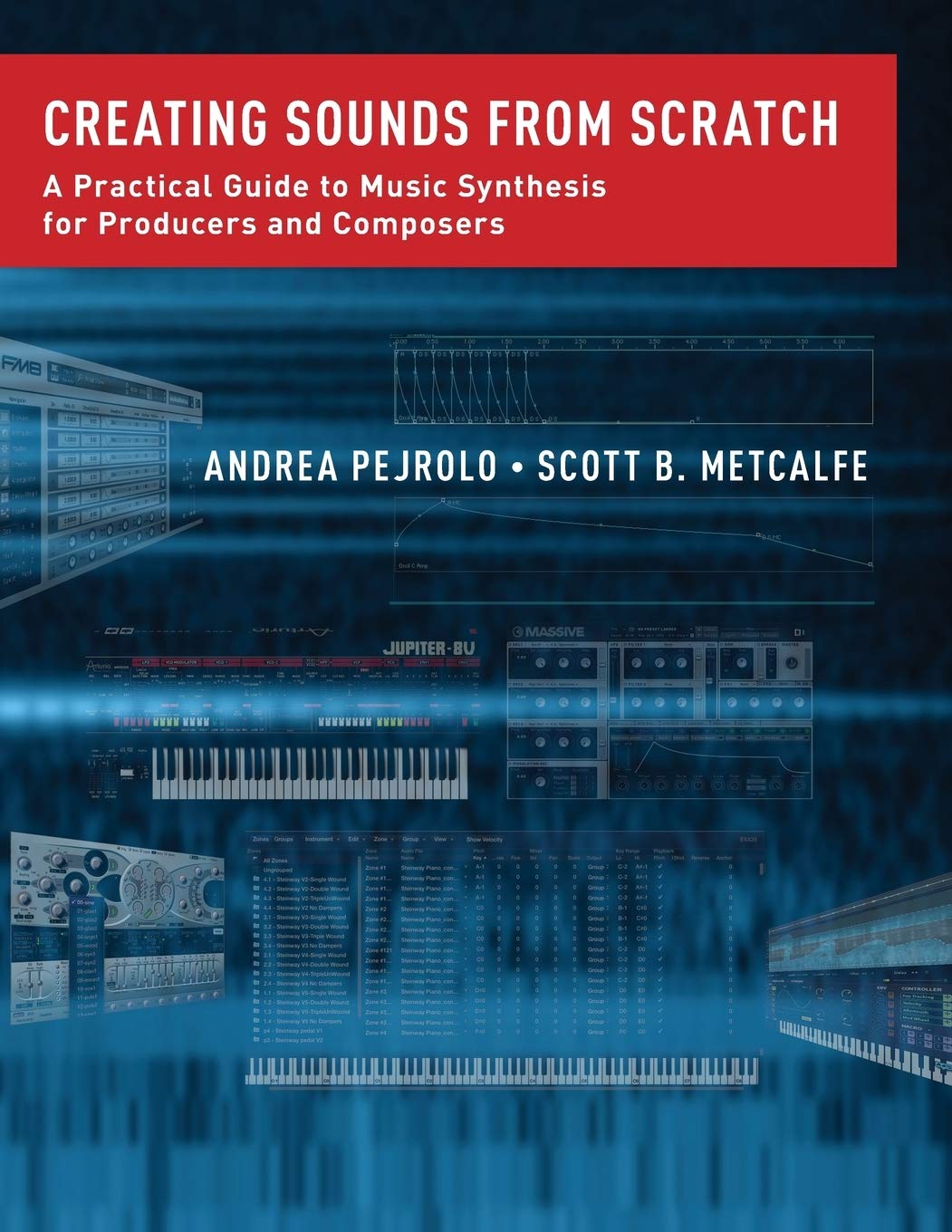
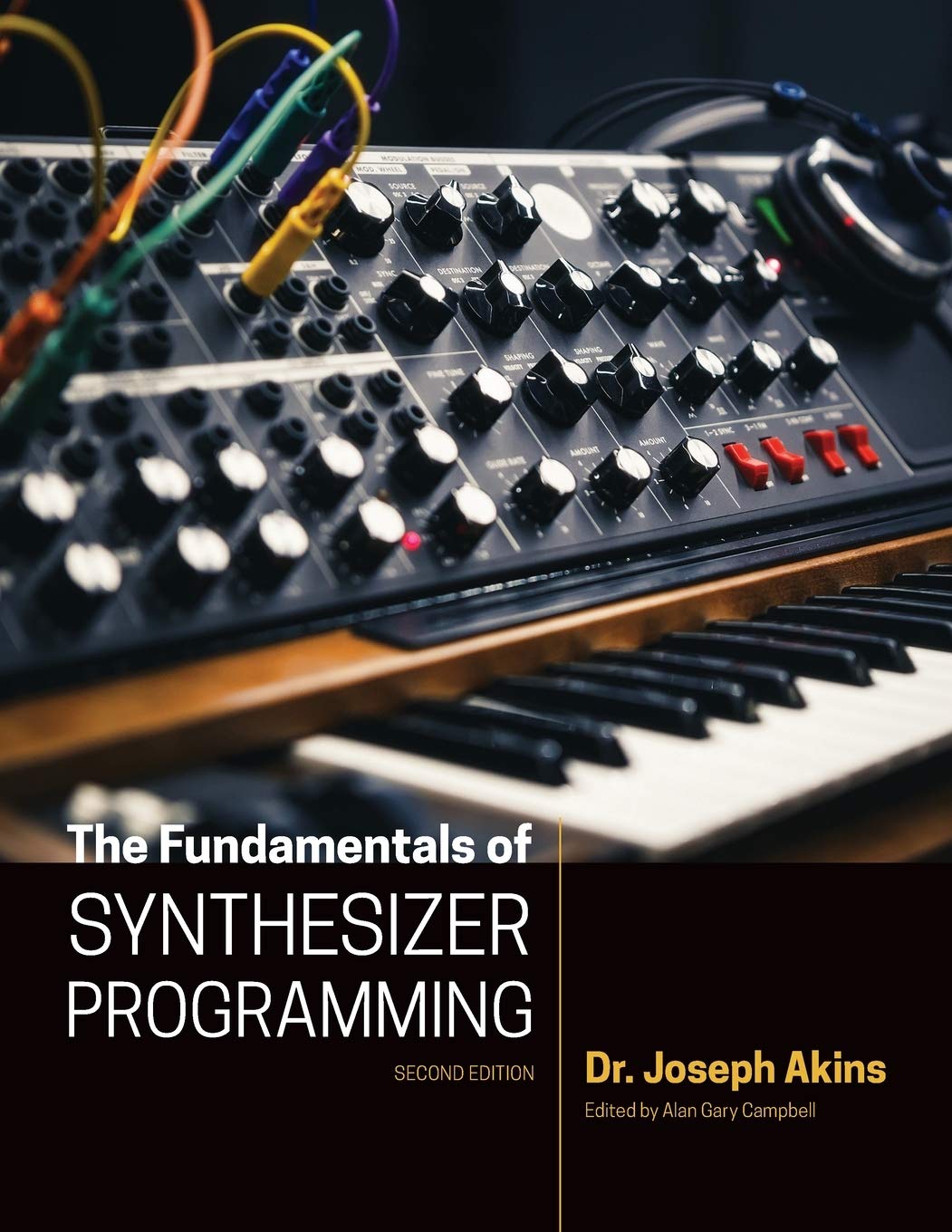

© Matrixsynth - All posts are presented here for informative, historical and educative purposes as applicable within fair use.
MATRIXSYNTH is supported by affiliate links that use cookies to track clickthroughs and sales. See the privacy policy for details.
MATRIXSYNTH - EVERYTHING SYNTH













© Matrixsynth - All posts are presented here for informative, historical and educative purposes as applicable within fair use.
MATRIXSYNTH is supported by affiliate links that use cookies to track clickthroughs and sales. See the privacy policy for details.
MATRIXSYNTH - EVERYTHING SYNTH















